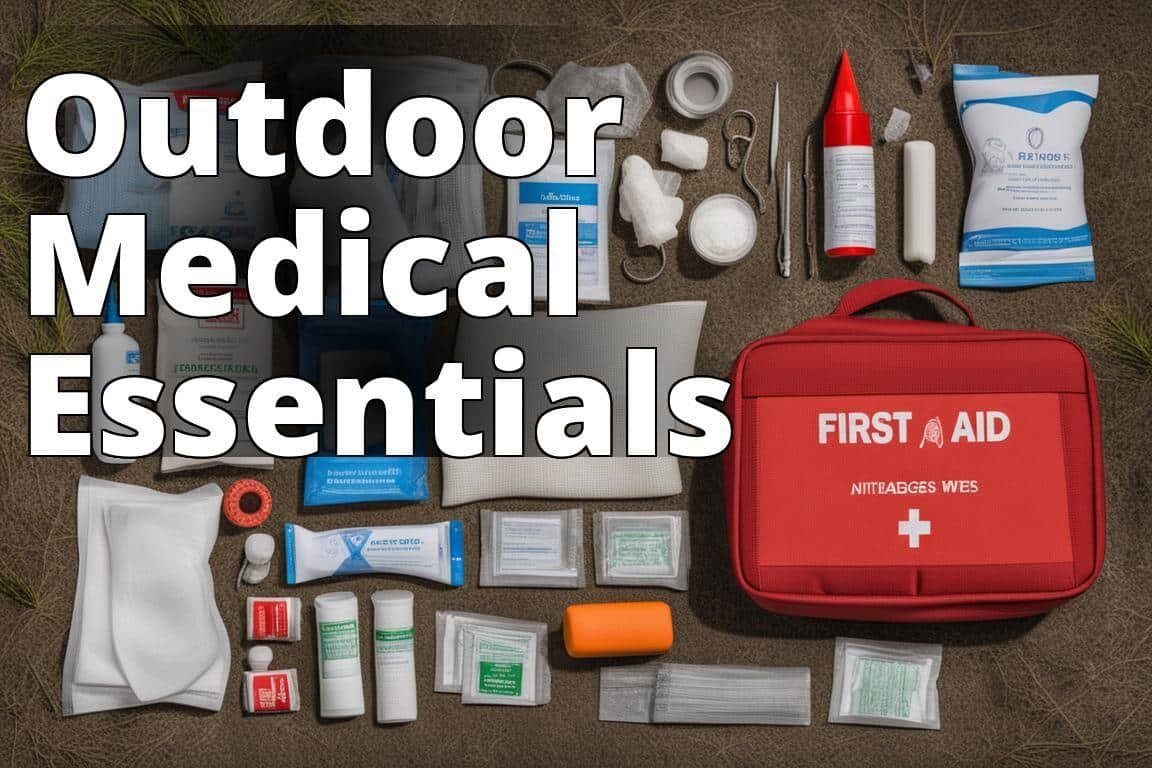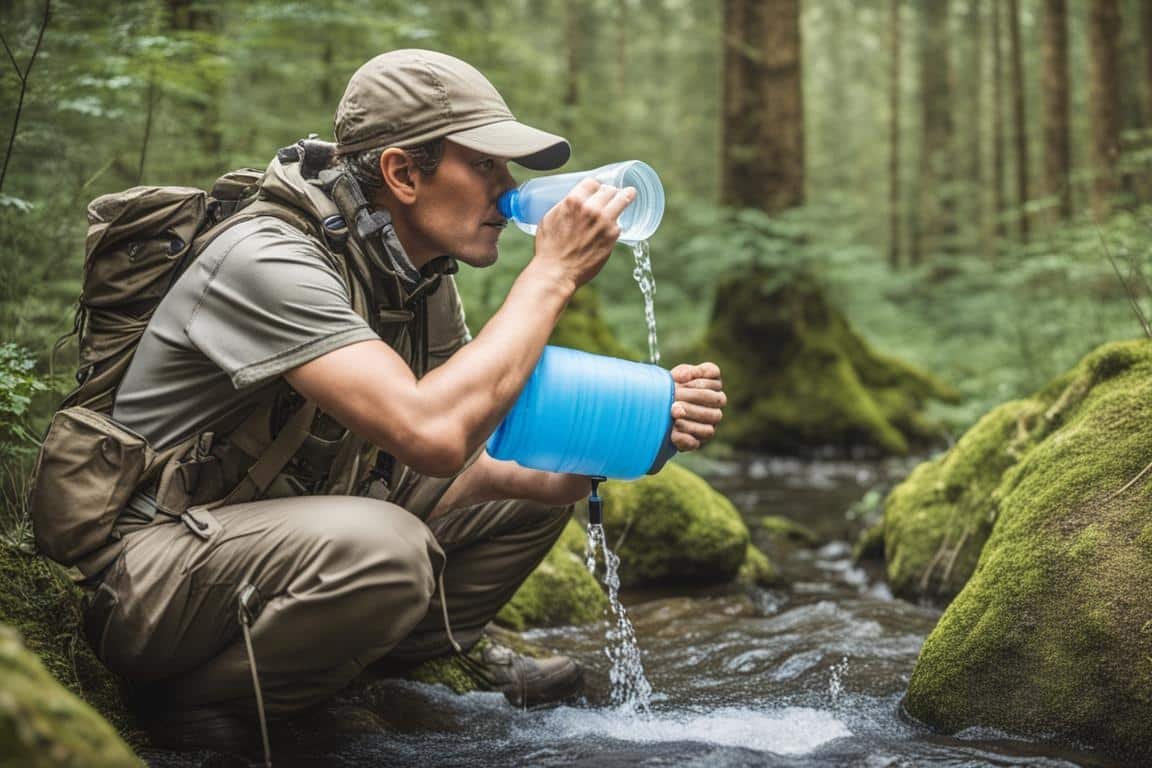10 Essential First Aid Skills for the Outdoors

When venturing into the great outdoors, the line between adventure and calamity often rests upon the knowledge and skills you carry within yourselffar beyond what any backpack can hold. It’s here, amidst the unpredictable whims of nature, that a sturdy grasp of emergency medical procedures proves not just beneficial, but potentially life-saving. This article doesn’t just list emergency techniques; it delves into the crucial skills needed to survive in the wilderness, peppered with stoic quotes about overcoming adversity, embodying a testament to the resilience and resourcefulness required to face the unexpected.
Learn Essential Outdoor First Aid Skills
- Treat a cut by cleaning the wound and applying pressure.
- Treat a burn by cooling the area with water and covering it.
- Treat hypothermia by warming the person slowly and providing warm fluids.
1. How to Treat a Cut
The simplest wounds can turn perilous without proper care. Treating a cut begins with calm and precise action. First, ensure your hands are clean to prevent infection. Apply gentle pressure with a clean cloth to stop the bleeding. If available, cleanse the wound with water and apply an antibiotic ointment before bandaging. Remember, He who conquers himself is the mightiest warrior (Confucius); maintaining composure is key.
Insider Tip: In the absence of a bandage, a clean piece of clothing can suffice until proper medical help is reached.

2. How to Treat a Burn
Burns, whether from a campfire or sun exposure, require swift and careful attention. Cool the burn under running water for at least 10 minutes but avoid ice, which can further damage the skin. Cover the burn with a sterile, non-fluffy dressing or cloth. The goal is to prevent infection and not to interrupt the healing process. Fire tests gold, suffering tests brave men (Seneca), and in treating burns, your swift, knowledgeable response is gold.
3. How to Treat a Sprain or Strain
Sprains and strains are common but no less debilitating. The R.I.C.E. methodRest, Ice, Compression, Elevationis your first line of defense. Rest prevents further injury, Ice reduces swelling, Compression aids in minimizing swelling, and Elevation decreases swelling and pain. Strength does not come from physical capacity. It comes from an indomitable will (Gandhi). Let your will guide your actions as you care for injuries in the wild.
4. How to Treat a Fracture
Fractures demand immediate and precise care to avoid complications. Immobilize the injured area without trying to realign the bone. Use splints made from sticks or an available rigid material, and bandages to secure the splint without cutting off circulation. Remember, The gem cannot be polished without friction, nor man perfected without trials (Chinese Proverb). Your ability to adapt and utilize the resources at hand reflects your preparedness to face such trials.
5. How to Treat a Dislocation
Dislocations should be treated with the same level of caution as fractures. Do not attempt to pop the joint back into place. Immobilize the joint, apply ice to reduce swelling, and seek professional medical help as soon as possible. Adversity introduces a man to himself (Albert Einstein), and facing the adversity of a dislocation with knowledge and patience can make all the difference.
6. How to Treat a Head Injury
Head injuries, even those that seem minor, can be deceptive in their severity. Monitor the injured person for signs of concussion or more serious harm. Keep them still and in a comfortable position while avoiding unnecessary movement. He who has a why to live can bear almost any how (Nietzsche). Understanding the why behind treating head injuries with utmost seriousness can save lives.
7. How to Treat Hypothermia
Hypothermia, a drop in body temperature, is a silent killer in the wilderness. Move the person to a warm shelter immediately. Remove any wet clothing and wrap them in blankets or warm garments. If conscious, provide warm liquids to drink. Life is not about waiting for the storms to pass. It’s about learning how to dance in the rain (Vivian Greene). Learning to address hypothermia can be the dance that saves a life.
8. How to Treat Frostbite
Frostbite affects extremities and exposed skin first, turning the skin white and numb. Warm the affected areas slowly; never rub them. Use body heat or warm (not hot) water. Do not use direct heat sources as they can cause burns. In the depth of winter, I finally learned that within me there lay an invincible summer (Albert Camus). The warmth you provide can bring back the summer to frostbitten limbs.
9. How to Treat Heat Exhaustion
Heat exhaustion can rapidly escalate to heatstroke, a life-threatening condition. Move the person to a cooler place, remove excess clothing, and cool them down with water or wet cloths. Provide sips of water if they’re fully conscious. Under the blazing sun, we find our strength (Anonymous), but remember, finding shade could be the strength needed in the moment.
10. How to Treat Dehydration
Dehydration is a silent threat that can escalate quickly, especially in the wilderness. Encourage the person to drink water slowly and steadily. If possible, provide a sports drink that can replenish electrolytes. Water is the driving force of all nature (Leonardo da Vinci), and in treating dehydration, you harness that force to sustain life.
Insider Tip: Always carry water purification tablets or a portable filter in your survival kit to ensure access to clean water.

Overcoming adversity in the wilderness often boils down to knowledge, preparation, and the will to persevere. These 10 emergency medical procedures are fundamental, not only for outdoor enthusiasts but for anyone who finds themselves facing the unpredictable forces of nature.
For those looking to enhance their first aid kit, consider this affiliated product link to a recommended first aid kit, designed to provide comprehensive care in the great outdoors.
The journey through the wild is fraught with challenges, but armed with these essential skills, youre better prepared to face them head-on. Remember, It is not the mountain we conquer but ourselves (Edmund Hillary). Let these words guide your preparedness, ensuring that when faced with the wilderness, you stand not as a conqueror, but as a sage warrior equipped with the wisdom of survival.
For further reading and to deepen your knowledge on survival skills, consider exploring our other articles:
- /why-you-should-know-emergency-survival-skills/
- /reasons-to-consider-emergency-survival-gear-ideas/
- /emergency-survival-gear-ideas-to-keep-in-your-car/
- /how-to-survive-lost-in-the-wilderness/
- /best-emergency-survival-tent-review/
- /why-you-should-learn-outdoor-survival-skills/
- /best-hand-warmers-for-hikers/
- /best-mountaineering-skills-for-hiking/
- /why-you-should-be-self-reliant-in-the-outdoors/
- /best-cold-weather-sleeping-bags-for-the-outdoors/
In the embrace of the wild, every bit of knowledge, every skill honed, and every piece of gear carried has the potential to turn a perilous situation into a story of triumph over adversity. Equip yourself not just with the tools, but with the wisdom and spirit of survival.
FAQs
Q. Who should know basic emergency medical skills for the outdoors?
A. Anyone who enjoys outdoor activities should learn these skills.
Q. What are the best emergency medical procedures to know for outdoor survival?
A. Basic first aid, CPR, treating wounds, and recognizing signs of hypothermia.
Q. How can I learn essential emergency medical skills for outdoor situations?
A. You can take a wilderness first aid course or read up on survival guides.
Q. What if I don’t have formal training in emergency medical care?
A. Start by learning basic first aid and gradually build your skills over time.
Q. What are the most common outdoor medical emergencies to prepare for?
A. Injuries, dehydration, hypothermia, heatstroke, and bites or stings.
Q. How important is it to have emergency medical knowledge in the outdoors?
A. It is crucial as it can make a difference in saving lives in remote areas.









